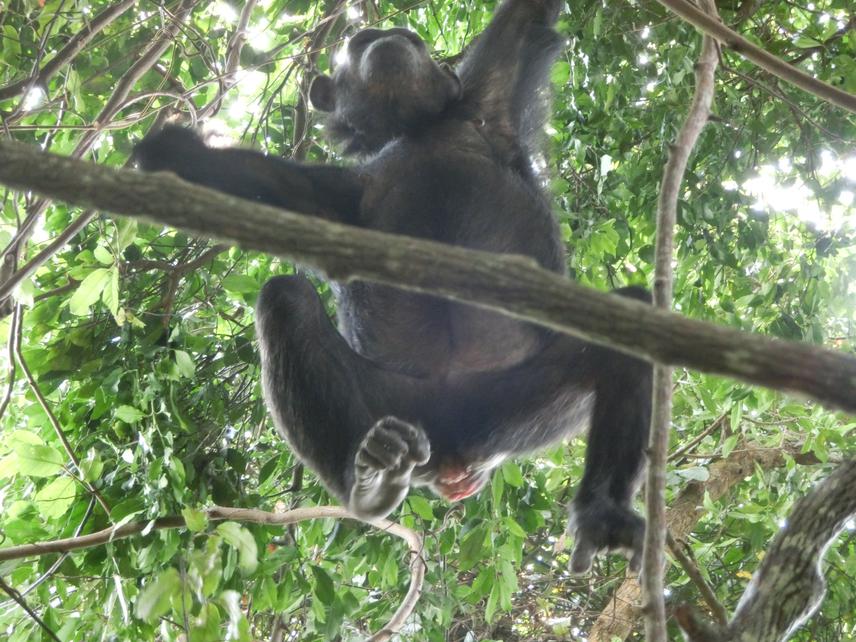Simula Maijo
Other projects
14 Jul 2020
Improving Conservation of Chimpanzee Habitat Through Beekeeping and Tree Planting in the Masito-Ugalla Ecosystem, Tanzania
9 Mar 2022
Balancing Conservation Goals and Human Livelihood Needs: Beekeeping as an Incentive for Conservation of Chimpanzee Habitat in the Masito-Ugalla Ecosystem
24 Jul 2023
Scaling Up Conservation of Eastern Chimpanzee (Pan troglodytes schweinfurthii) and its Habitats in Tongwe Forest Reserves, Western Tanzania
Anthropogenic activities in the Masito-Ugalla Ecosystem in Western Tanzania seem to be mainly driven by poverty in this region, which leads to over-dependence on natural resources, expansion of settlements, farms and increasing number of livestock resulting in human encroachment in one of the last unprotected chimpanzee habitats in the world. This project aims at finding out how anthropogenic activities influence chimpanzee spatial distribution, chimpanzee plant forage resources and habitat selection in the Masito-Ugalla Ecosystem. Ground surveys will be conducted to understand the influence of anthropogenic activities on chimpanzee forage species availability, abundance and diversity. Four sites of varying disturbance levels resulting from human activities will be studied to draw inferences on the correlation between anthropogenic activities and chimpanzee food resources and habitat selection. The results of this study will provide suggestions that will contribute to conservation of chimpanzees in western Tanzania.

Chimpanzee on liana. ©Simula Maijo.
Chimpanzee (Pan troglodytes) populations across Africa are dramatically declining (Estrada et al., 2017), mainly due to anthropogenic activities. As chimpanzees prefer areas with low disturbance intensities (Bryson-Morrison et al., 2017), only few studies have investigated how anthropogenic activities influence chimpanzee habitat use. While eastern chimpanzee (P. t. schweinfurthii) population size, density, diet and behaviour in the Masito-Ugalla Ecosystem (MUE) in western Tanzania have been studied, little is known of how anthropogenic activities affect chimpanzee forage species and habitat suitability, particularly in this area of low conservation status. Some parts of the MUE faces recurrent anthropogenic activities due to proximity of human settlements to its borders, impact of decades of refugees and lacks of active management of chimpanzee habitat.
In Tanzania, chimpanzees (P. t. schweinfurthii) are geographically distributed across the western region (Kano, 1972). Their population in the country is estimated to be less than 2,500 individuals in the wild (Piel & Stewart, 2014). A large population lives outside of protected areas (i.e. National Parks), with only about 25% of their population remaining mainly within two national parks (Piel et al., 2015), namely Gombe and Mahale National Parks. They are also found in the MUE, the largest and least protected natural forest reserves in western Tanzania. Chimpanzee habitats outside protected areas are vulnerable to habitat fragmentation and disruption by people. Due to increasing pressures of agricultural expansion, cattle herding, fires, logging and poaching (Plumptre et al., 2010) in MUE, feeding and nesting environments might be threatened. Since chimpanzee abundance and distribution is primarily dependent on food availability and nesting sites within their habitats, these highly endangered species might be disappearing from the MUE soon. Thus, conducting a comparative study between sites that face different intensities of anthropogenic activities is critical for assessing the influence of anthropogenic activities on chimpanzee adaptability across the MUE.
Our ground transects will highlight human activity hotspots (spatially and temporally), i.e., areas where most humans harvest resources in the ecosystem and relate those to areas that are avoided by chimpanzees. We will identify plant species that are most susceptible to human harvesting, and those species that are preferred by chimpanzees. We can then relate how these activities affect chimpanzee habitat and food selection. This is important for spatial land use planning for both protection activities but also to understand human needs and to mitigate damage as well as to provide alternative income.